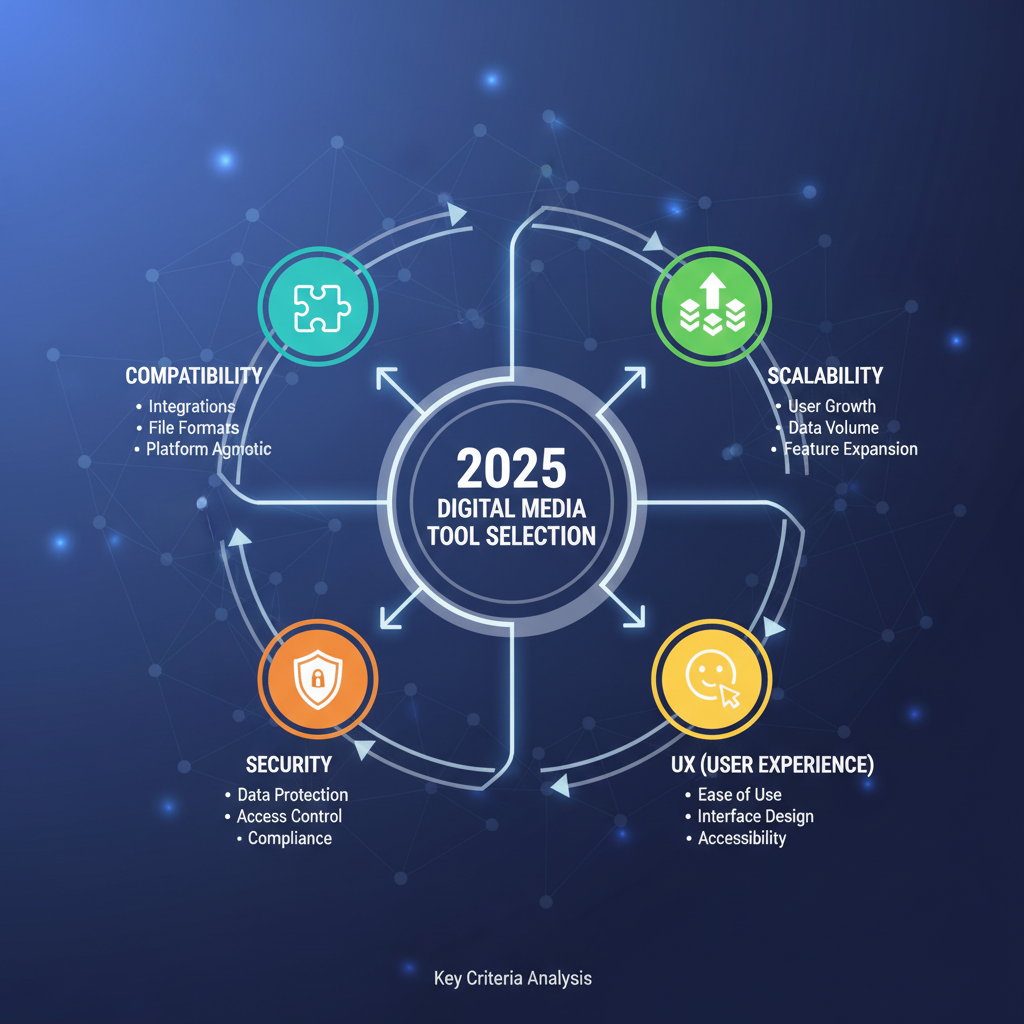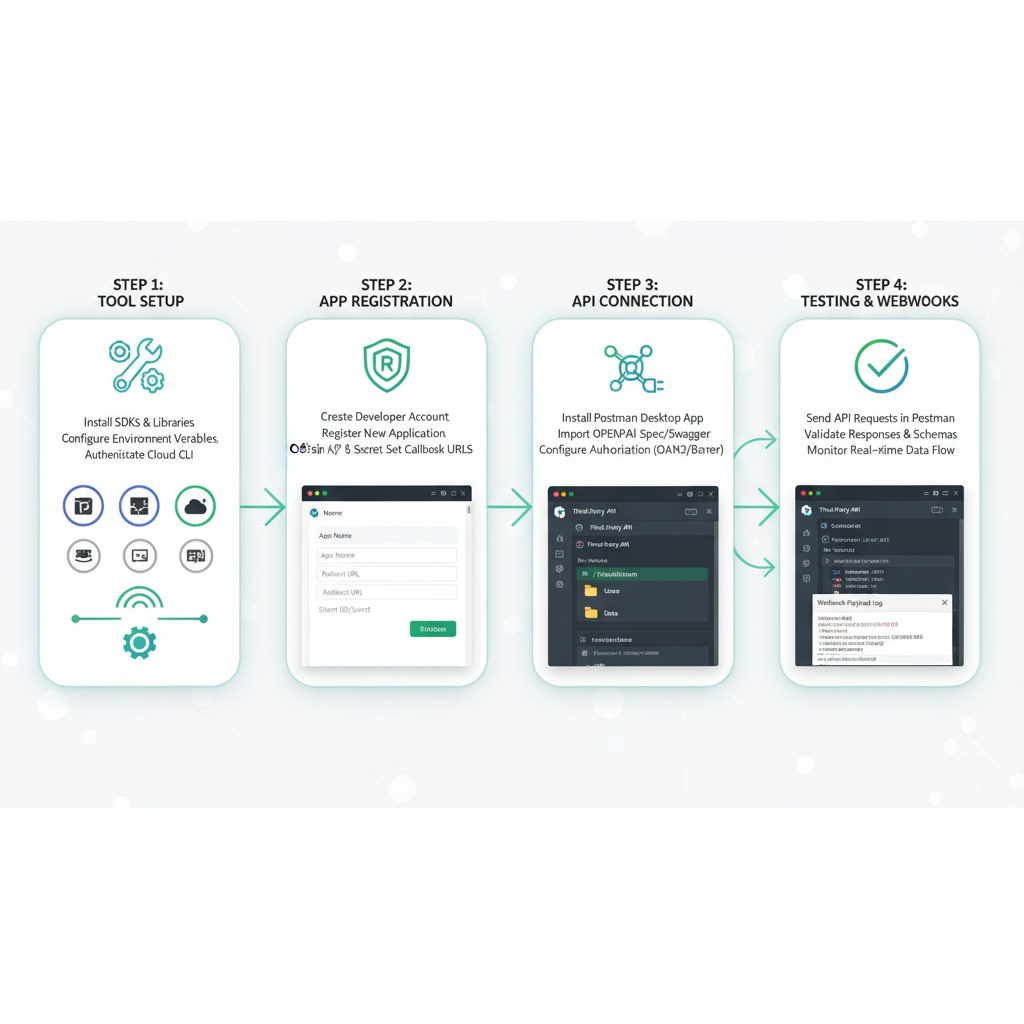Top Digital Media Tools for Third-Party App Integration 2025
Discover the top digital media tools for seamless third-party app integration in 2025, including APIs, automation, and cloud-based CMS solutions.

The Importance of Seamless Third-Party App Integration in Digital Media Workflows
In today’s fast-evolving media environment, especially heading into 2025, digital media teams rely on interconnected software ecosystems to manage assets, campaigns, and analytics. Seamless third-party app integration is the backbone of efficiency, enabling creative, marketing, analytics, and delivery workflows to function without costly bottlenecks. From linking a content management system to a cloud storage provider, to enabling real-time analytics updates for social campaigns, integration minimizes siloed data and streamlines effort.
By connecting tools with strong integration capabilities, businesses can:
- Accelerate production timelines.
- Improve data consistency and accuracy.
- Enable cross-platform automation.
- Reduce repetitive tasks through optimized workflows.

---
Key Criteria for Selecting Tools in 2025
When seeking the best digital media tools for third-party app integration 2025, decision-makers should evaluate solutions with these priorities in mind:
1. Compatibility
Confirm the tool supports major APIs, SDKs, and standardized integration protocols like REST, GraphQL, and Webhooks.
2. Scalability
Ensure platforms can manage increasing workloads without performance drop — critical for media operations managing large asset volumes.
3. Security
Prioritize encryption, OAuth 2.0 authentication, and compliance with regulations such as GDPR, CCPA, and relevant industry standards.
4. User Experience (UX)
Integration should be intuitive for technical and non-technical personnel, ideally supporting low-code or no-code implementation.
---
Top API Management Platforms
API management tools form the foundation for connections between apps. Features often include endpoint monitoring, security policies, and code generation.
Postman
Versatile for API development, testing, and documentation — essential for validating endpoints before deployment.
MuleSoft
An enterprise-grade solution offering broad protocol support and robust data transformation with its Anypoint Platform.
SwaggerHub
Geared toward collaborative API design, ideal for establishing standardized definitions prior to launch.
| Platform | Strengths | Use Case |
|---|---|---|
| Postman | Testing & Monitoring | Quality assurance in API-driven media automation |
| MuleSoft | Enterprise scalability | Complex multi-system integrations |
| SwaggerHub | Collaborative API design | Defining consistent data models |
---
Leading Automation Services for Digital Media Use Cases
Automation is a powerful driver for efficiency, tackling repetitive processes like asset tagging, format conversion, and publishing.
Zapier
Connects hundreds of media-related apps with user-friendly workflow automation — favored by marketing teams.
Make (formerly Integromat)
Offers advanced routing and data transformation for intricate workflows.
n8n
Open-source automation with self-hosting, delivering high flexibility to engineering teams.

Example use cases:
- Auto-transcoding videos and distributing to multiple streaming platforms.
- Syncing social media posts with analytics dashboards.
- Triggering asset updates when new files are detected in cloud storage.
---
Cloud-Based Content Management Systems with Open Integration Capabilities
CMS platforms must offer robust integration to handle large multimedia libraries efficiently.
WordPress + REST API
Rich plugin ecosystem and open API endpoints for broad custom integrations.
Contentful
Decoupled headless CMS architecture designed for seamless API usage.
Strapi
Highly customizable open-source CMS providing developer control.
Benefits:
- Unified media asset management.
- Flexible syndication across web, app, and social channels.
- Easy scaling via cloud infrastructure.
---
Social Media Management Tools with Robust API Support
Social platforms remain critical in digital media delivery, and integration-friendly management tools reduce operational friction.
Buffer
Accessible API enabling automation and scheduling.
Hootsuite
Enterprise-ready, with multi-channel API support and advanced analytics.
Sprout Social
Strong reporting coupled with CRM integrations for deeper engagement insights.
| Tool | API Strength | Integration Example |
|---|---|---|
| Buffer | Open & REST-based | Sync schedules with project management |
| Hootsuite | Multi-channel API | Connect sentiment analysis tools |
| Sprout Social | Analytics data API | Feed campaign stats into BI dashboards |
---
Analytics Platforms with Multi-App Integration
Media strategies depend on analytics that consolidate diverse inputs into actionable insights.
Google Analytics 4
Integrates across web and app sources, enabling customizable reporting.
Adobe Analytics
Offers granular segmentation for targeted content.
Mixpanel
Designed for product-focused, event-driven tracking.
---
Streaming and Media Delivery Services with Easy Integration Options
Streaming services with robust APIs empower better playback control, analytics, and monetization.
Vimeo OTT
Flexible video publishing and subscription management.
Wowza Streaming Engine
Powerful live-streaming capabilities with customizable integrations.
Brightcove
Comprehensive APIs for monetization and performance tracking.
---
Security and Compliance Tools for Integrated Environments
Security is crucial in complex, connected workflows.
Okta
Manage identities and access across integrated systems.
Auth0
Design personalized authentication flows.
DataDog Security Monitoring
Real-time anomaly detection in API and integration points.
---
Upcoming Trends in Integration Technology for Digital Media in 2025

Emerging trends likely to shape integration strategies:
- AI-Driven API Mapping for rapid identification of connection points.
- Low-Code Integration Platforms empowering non-technical staff.
- Decentralized Content Delivery leveraging blockchain for security.
- Edge Computing bringing faster media processing closer to end-users.
---
Checklist for Assessing Integration Readiness and Tool Selection
Integration Readiness Checklist:
- API Inventory – Assess available APIs and their documentation.
- Security Protocols – Verify regulatory compliance.
- Scalability Plan – Check performance benchmarks.
- User Training – Schedule onboarding for all relevant teams.
- Monitoring Setup – Implement robust logging and analytics.
---
Actionable Recommendations for Choosing the Right Tool Stack
Choosing the best digital media tools for third-party app integration 2025 should involve:
- Initiating with strong API management for secure data exchange.
- Adding automation layers to reduce manual intervention.
- Adopting a CMS with robust API features for centralized resource management.
- Integrating social media tools for cohesive campaign oversight.
- Utilizing analytics platforms for data-rich decision-making.
- Leveraging streaming services with flexible APIs for distribution.
- Embedding security tools to safeguard the integration network.
By following these strategies, digital media teams can establish an integration-ready, secure, and expandable system that accelerates workflows and fosters creative agility.
---
Summary:
In 2025, achieving seamless third-party app integration is essential for digital media efficiency, security, and scalability. From APIs to automation, CMS to analytics, and streaming to compliance, the right mix of tools empowers teams to deliver content faster, make smarter decisions, and adapt effortlessly to new demands.
CTA:
Explore and implement the most compatible, scalable, and secure integration tools today to future-proof your digital media workflows.




